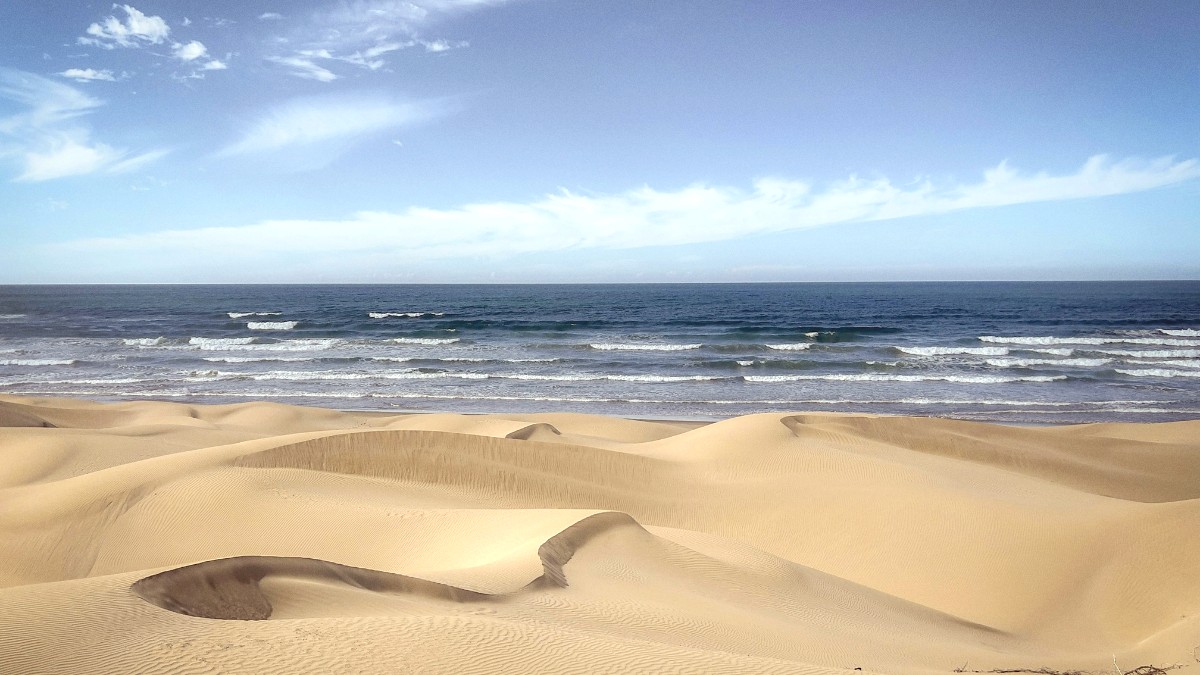
The Atlantic Coast, Morocco
Summer (June-August): Average temperatures 20°C to 28°C (68°F to 82°F). Humidity moderate to high. Strong trade winds, the "Alizé," are most consistent and powerful, perfect for watersports. Ocean offers refreshing coolness.
Autumn (September-November): Temperatures 18°C to 26°C (64°F to 79°F). Winds consistent, though not peak summer strength. Precipitation remains low through September and October, increasing slightly in November. This shoulder season offers comfortable warmth and fewer crowds.
High Season (July-August, and around Christmas/New Year): Weather warm, winds strongest for watersports, lively city. Higher prices for accommodation and flights. Larger crowds. Constant strong wind can be intense for non-watersports visitors.
Shoulder Season (April-June, September-October): Ideal time for many visitors. Pleasant temperatures and fewer crowds. Good wind conditions. Moderate prices. A balance of agreeable weather and a relaxed atmosphere. Early spring winds might not be as strong for wind sports. Some services might operate on reduced hours.
(November-March, excluding Christmas/New Year)
Lowest prices for accommodation and activities. Fewest tourists, allowing for an authentic local experience. Mild winter temperatures comfort sightseeing.
Higher chance of rain (Dec-Feb). Weaker winds, less ideal for windsurfing or kitesurfing. Some smaller businesses may close or operate with reduced hours.
(April-June, September-October)
Pleasant temperatures, fewer crowds than high season. Good wind conditions. Moderate prices. Good balance of weather and relaxed atmosphere.
Early spring winds may not be as strong for wind sports. Some services might operate on reduced hours early or late.
(July-August, Christmas/New Year)
Warm weather, strongest winds for watersports. Lively city atmosphere. All tourist facilities operate fully.
Peak prices for accommodation and flights. Larger crowds. Constant strong wind can be intense for those not interested in watersports.
Many nationalities enter Morocco without a visa for tourist stays up to 90 days. This applies to citizens from countries like the United States, Canada, the European Union member states, Australia, New Zealand, and Japan, simplifying entry. For longer stays exceeding 90 days, a residence permit is necessary. Apply through the Moroccan General Directorate for National Security (DGSN) after arrival. This process takes time and various documents.
Your passport must be valid for at least six months beyond your planned departure from Morocco, with at least two blank pages for stamps. Immigration officials may request proof of your onward or return ticket. They may also ask for proof of sufficient funds to cover your stay, though this is rare for tourists. Passport-sized photos are not typically needed for visa-exempt entries. For visa applications, the embassy or consulate provides photo specifications.
No entry fees for standard tourist entries into Morocco.
Upon arrival, complete an arrival card and proceed to immigration control for passport stamping.
No special permits generally needed for typical tourist activities. Drone flying requires research on local regulations.
Morocco does not mandate specific vaccinations for entry. Consultation with a healthcare professional for routine vaccinations is wise.
If your nationality needs a visa, obtain it from a Moroccan embassy or consulate before travel.
Morocco uses the Moroccan Dirham (MAD). These are approximate daily costs based on travel style.
Expect around 300-500 MAD (~$30-$50 USD) daily.
Your daily costs likely 600-1200 MAD (~$60-$120 USD).
Morocco is generally safe for travelers. Staying informed on common concerns is wise.
Tipping is common in Morocco and appreciated for good service.
In mid-range to upscale restaurants, a 10% tip is standard. In smaller, local eateries, round up the bill or leave a small amount (5-10 MAD). For cafes, round up or leave a few dirhams (2-5 MAD).
Shows appreciation for good service.
Do not haggle over food prices in established restaurants.
For taxis, round up to the nearest 5 or 10 MAD. Agree on the fare beforehand. For porters or baggage handlers, offer 10-20 MAD, depending on luggage amount and effort.
Small tips make a difference for daily wage earners.
Avoid disputes by confirming taxi fare upfront.
For a half-day tour with a guide, 50-100 MAD is appropriate. For a full day or exceptional service, you may give more. For public toilet attendants, a small gratuity of 1-2 MAD is customary.
A gesture of good will for helpful local service.
Tipping culture does not apply to government officials or police.
| Category | Item | Price Range (MAD) |
|---|---|---|
| Accommodation | Hostel dorm bed | 80-150 |
| Accommodation | Mid-range riad/hotel | 450-900 |
| Meals | Street food | 20-50 |
| Meals | Fine dining main course | 350+ |
| Transportation | Petite taxi (within Essaouira) | 10-20 |
| Transportation | Grand taxi (shared, inter-city) | 80-120 per person |
| Attractions | Museums/galleries | 10-70 |
Tipping is common and appreciated for good service in Morocco. Rounding up bills or leaving small amounts for minor services is customary.
10% for good service in mid-to-upscale restaurants.
Rounding up or 5-10 MAD for small, local places.
Round up the bill or leave 2-5 MAD.
Tipping is a gesture of appreciation.
Taxis: Round up to the nearest 5 or 10 MAD. Agree on fare beforehand.
Porters/Baggage handlers: 10-20 MAD depending on luggage.
Guides: For a half-day tour, 50-100 MAD. More for full day/exceptional service.
Public toilet attendants: 1-2 MAD customary.
Always carry small denominations.
Hostel dorm: 80-150 MAD. Basic guesthouse: 250-400 MAD. Mid-range riad: 450-900 MAD. Luxury riad: 1000-3000+ MAD.
Street food: 20-50 MAD. Local cafe main: 60-120 MAD. Mid-range main: 150-300 MAD. Fine dining main: 350+ MAD. Mint tea: 10-25 MAD.
Petite taxi (within): 10-20 MAD. Grand taxi (shared, inter-city): 80-120 MAD/person. CTM/Supratours bus (Essaouira-Marrakech): 90-120 MAD.
Staying aware of surroundings and knowing emergency contacts is important for a safe trip.
Smart choices reduce costs while exploring Essaouira.
Eating at street food stalls and small local eateries is delicious and affordable.
Negotiation is expected in the souks; bargain respectfully for goods.
The medina is pedestrian-only; walking everywhere inside is the best way.